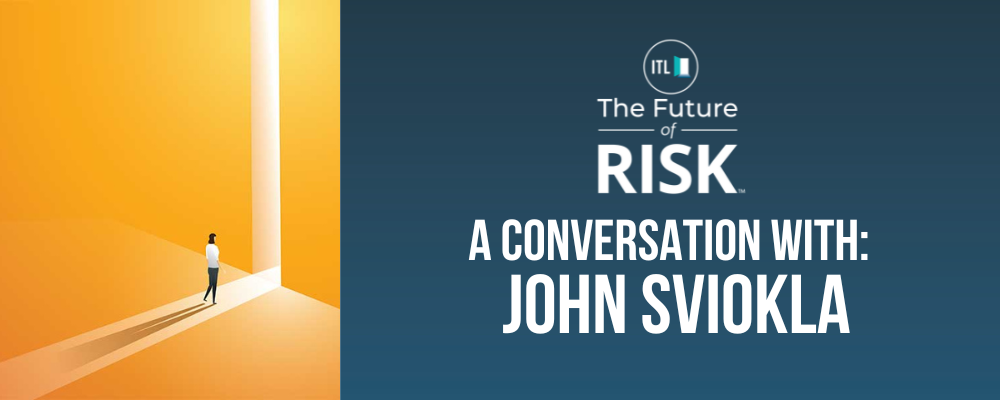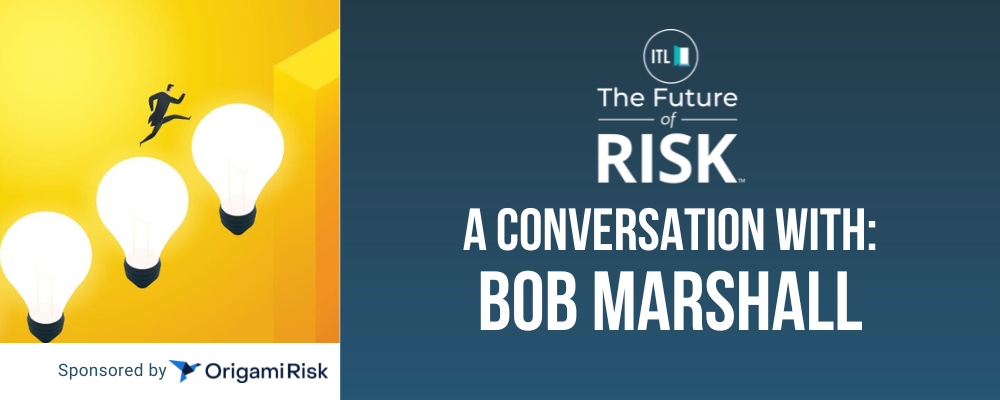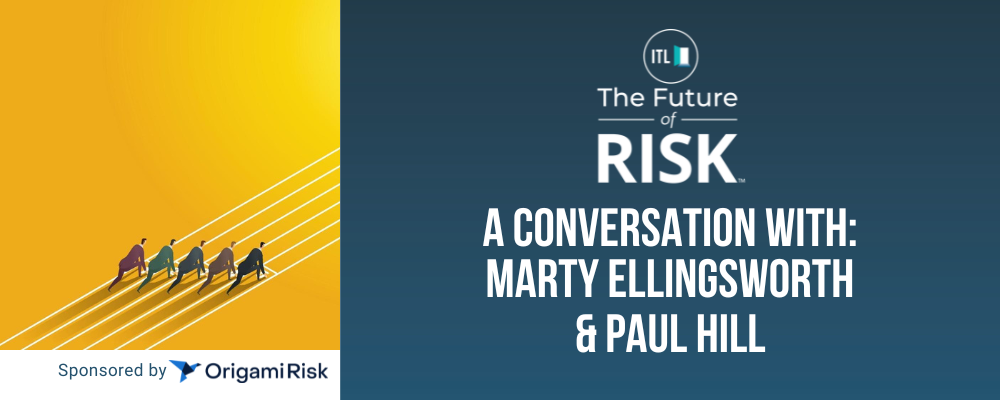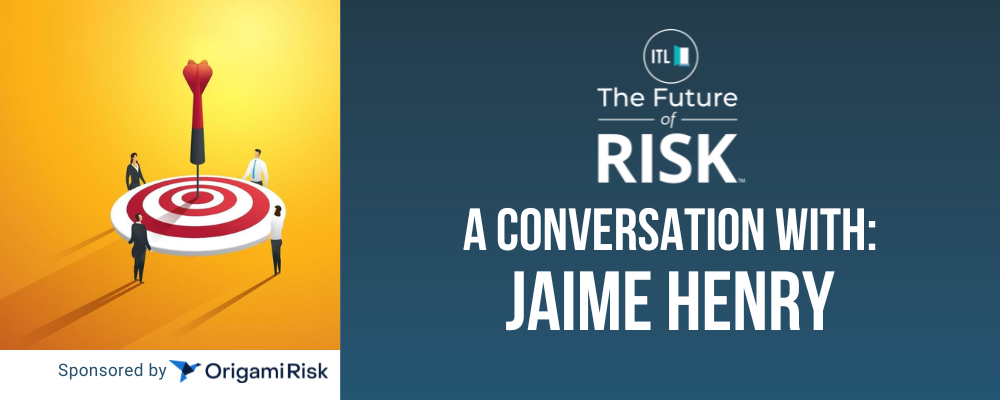 |
Dr. John Sviokla is co-founder of GAI Insights. He previously was a strategic adviser at Manifold and former senior partner and chief marketing officer of PWC. He has almost 30 years of experience researching, writing and speaking about digital transformation — making it a reality in companies large and small. He has more than 100 publications in many journals, including Sloan Management Review, WSJ and the Financial Times. |
Insurance Thought Leadership:
You just put on a big event on generative AI. You also co-wrote a recent article in Harvard Business Review on how businesses should think about it. Could you start us off with an overview of how you’re seeing the key issues?
John Sviokla:
If a big part of your cost base depends on manipulating what I call WINS – words, images, numbers and sounds – your whole business is going to change.
And critical functions will change for lots of other businesses, too. Drug discovery is going to be completely different. IBM and Moderna can look at four orders of magnitude more molecules by using generative AI as opposed to a traditional computational model; instead of 100,000 molecules, they’re now looking at more than a billion. For some companies, marketing will change drastically even if the majority of their cost base is not WINS work.
Every meeting is going to completely change. For one thing, all the meeting notes will be captured automatically, as will all the to do’s and the follow-ups, and the synopsis will be generated by the AI.
We’ve reached a threshold. We haven’t completely passed the Turing test, but we’re pretty close. [Posed by British mathematician and computer scientist Alan Turing in 1950, the Turing test concerned whether a human could tell whether they were conversing with a computer or another person. If the person couldn’t tell the difference, the machine was said to have passed the test.] And everyone can talk to a generative AI, almost no matter what language they speak.
Insurance Thought Leadership:
AI always had a brain, but now it has a mouth, too. Eyes and ears, as well.
Sviokla:
In addition, every person now becomes a team, with the AI helping. And that’s huge.
I think we’re at a Henry Ford moment. A lot of people talk about his assembly line, but they forget Fred Taylor, whose knowledge management was the first large language model for business, because he broke all processes down into their tiny parts so they could then be put back together in the most efficient way. If you look at what Taylorism did, what Fordism did, it took the unit cost of everything way, way down and pushed quality way up. Generative AI will do the same.
Ford also doubled the going wage, which I think is a lesson for today’s businesses as they reap the benefits of generative AI. Surplus can go only three places: to the customer, to the investor or to the labor. I would encourage people, if they want to be more than one-and-done, to provide a lot of the surplus to labor.
Insurance Thought Leadership:
In terms of effects on insurance, I can certainly imagine the sort of thing you're talking about in, say, underwriting or claims. You're taking in all this information, and you're using the AI, and you're getting smarter. You’re also on a steep learning curve and are getting smarter about how to get smarter. Is that how you’re thinking about this?
Sviokla:
Well, yes. If you look at insurance companies, some are heavy on customer interaction and on indirect cost. All that stuff gets completely reengineered. Completely.
The chatbots we have now are lobotomized. The new chatbots have a brain. And the filtering will happen up front. You won’t have to go through a phone tree and get routed to a human when the system fails. The AI will know up-front that something is too complicated for a machine and will route the call to a human expert.
Someone at our event used the new technology to greatly speed up the handling of calls in a call center. There aren’t any third-level service reps any more. It’s all down at the first level now. Customers are happier, and he got a return on his investment in a month.
I know someone at a major health insurer that has already deployed over a dozen large language models doing things like customer support and regulatory compliance.
Then you've got all of what today is dark data: data on what people look up in FAQs, the questions they ask about how something works or what a policy means and so on. All that data will be analyzed by the AI and turned into insights that can be used throughout an organization.
You also have folks like Tomorrow.io, which is launching a new set of satellites that have fine-grained operational weather data. They're down at the fleet level, saying, Don't roll those trucks in North Texas for the next two hours because you're going to have flash floods. That kind of stuff.
AI, in general, and generative AI, in particular, enhance both sides of the Law of Computability [a formulation of John’s that he describes at length here]. The AI increases your ability to digitize through pattern matching and machine learning. It also increases your understanding of whatever you’re analyzing. The effect is like the Law of Accelerating Returns.
And what’s going to happen in health insurance when you can take the continuous analog data on my heart and combine it with data from my medical record along with the image data from my MRI? What the hell are we going to find? I have no idea. But I bet we find some cool stuff.
A lot of knowledge work is like discrete manufacturing, but you’re going to have a continuous flow. It’s like the switch to Ford’s River Rouge. Ford had to redesign everything, and we will, too.
Insurance Thought Leadership:
If you're running a big insurance company these days, how do you get started? I mean, this has to be kind of intimidating for people who are not technologists. They sort of know they need to do something, but what do they do?
Sviokla:
Scientists have a term, “inattentive blindness” [defined as “occurring when an individual fails to perceive an unexpected stimulus in plain sight, purely as a result of a lack of attention.”] It’s like what happens in the famous gorilla video. [Viewers are asked to count how many times people in white shirts, as opposed to black shirts, in a group pass a basketball to each other, and 80% fail to notice that someone in a gorilla costume walks into the scene, stops in the middle of the group to look at the camera, beats his chest and slowly walks off. If you haven’t seen it, you can find it at www.theinvisiblegorilla.com.] What drives inattentive blindness is high pressure, lots on your mind, basically overcrowding of your head. That's pretty much the definition of an executive.
So the first thing is every senior executive or every executive in the company needs to spend five hours personally using the stuff.
Then you need to expand your network, because your innovation space is really constrained by who you interact with. You do quarterly updates to make sure you’re on track. You fund the rebels to make sure you’re exploring all your options. You do future back planning – you figure out where you want to be in five years, or whatever the time frame, then ask yourself what you need to do today to create the opportunities that will get you there.
You start with customer service, where you’re guaranteed to get an ROI within a year. Then you take the surplus and put it into your talent. You want to become a talent magnet because whoever becomes a talent magnet will have a massive advantage. It’ll be hard for people to catch up if you reinvest in the talent and the data. Your unit costs will just keep getting so much better. It’ll be like Ford in the early days. Nobody can catch me. It’ll be like Toyota more recently. They walked people through the factory and showed what they were doing, but other companies still couldn’t do what Toyota did because they didn’t have the organizational capability.
Because insurance is largely a WINS business, those that start early and keep investing in their people will be on a different learning curve, while others simply won’t progress as fast. And the scale effects here are enormous.
If you can get your organization to constantly be in dialogue with the machine to improve, that will enable a new management approach. People just aren't used to doing that. But your organizational systems will know how to learn faster than the competition, and you can amplify the living daylights out of your learning capability.
Insurance Thought Leadership:
Any parting thoughts?
Sviokla:
We’ve all seen the returns that technology breakthroughs can generate. As of three weeks ago, Nvidia, Microsoft, Apple, Amazon, Meta and Google/Alphabet had a combined market capitalization of $10.1 trillion. If you combine Japan, the world's third-largest economy, and Germany, the fourth largest, that's GDP of $8.4 trillion.
But I think generative AI is bigger than the internet. The internet lowered transaction costs and facilitated a lot of innovation, but we’re now reapportioning work between machines and humans in a fundamental way and can rethink all our management processes.








